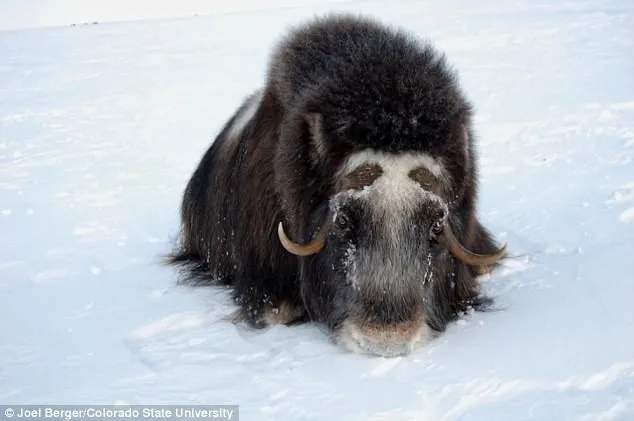Alaska, a pristine and magnificent land in the far north of North America, is renowned for its breathtaking natural beauty, from snow-capped mountains to majestic glaciers. However, this harsh beauty comes with natural challenges, particularly fierce snowstorms. These historic Alaskan blizzards not only impact human lives but also profoundly affect the ecosystem and leave an indelible mark in the memories of its inhabitants. The recent story of 52 caribou buried by an “ice tsunami” serves as a stark reminder of the formidable power of nature in this region.
Terrifying Snowstorms in Alaska’s History
Alaska, with its unique geographical location near the Arctic Circle, frequently endures severe snowstorms known for their devastating power and ability to trigger extreme weather phenomena. To fully understand the severity of these blizzards, we need to look back at history and highlight some of the largest snowstorms ever recorded in Alaska – events that have shaped life and the environment here.
“Ice Tsunami” – A Blizzard Hazard
The “ice tsunami,” is one of the most fearsome threats associated with snowstorms in Alaska and other Arctic regions. Unlike tsunamis caused by earthquakes, “ice tsunamis” form when snowstorms with strong winds create immense pressure on thick snowpacks on the ground or glaciers. This pressure can cause a large mass of snow and ice to compress and move at high speed, sweeping away everything in its path.
The incident of 52 Alaskan caribou being buried by an “ice tsunami,” as reported by the Daily Mail, is a clear demonstration of the destructive power of this phenomenon. According to scientists, a blizzard with winds up to 160 km/h created an “ice tsunami” as high as 4 meters, sweeping away and burying the unfortunate herd of caribou. This event not only caused ecological damage but also highlighted the potential danger of “ice tsunamis” to both humans and animals.

The 1964 “Good Friday Earthquake” Blizzard
One of the most notorious snowstorms in Alaskan history is the blizzard associated with the “Good Friday Earthquake” of 1964. While primarily known for the most powerful earthquake in North American history, this seismic event was also accompanied by a severe blizzard, compounding the destruction and hardship for Alaskans.
The “Good Friday Earthquake” struck on Good Friday in 1964, triggering tsunamis across the Pacific and devastating many coastal communities in Alaska. Simultaneously, a major snowstorm hit the region, bringing heavy snow and strong winds, disrupting rescue and recovery efforts. Transportation was paralyzed, many areas were completely isolated, and residents faced shortages of food, water, and other essential supplies in harsh weather conditions.
The February 2012 Snowstorm
In February 2012, Alaska was once again battered by a massive snowstorm, causing a state of emergency in many areas. The blizzard lasted for days, bringing record snowfall and strong gusts, paralyzing numerous cities and towns. In Anchorage, Alaska’s largest city, snowfall reached nearly 70 cm, causing traffic chaos, school and office closures, and numerous flight cancellations.
The 2012 snowstorm not only caused daily life disruptions but also significant economic damage. Many businesses had to shut down, the tourism industry was severely affected, and the cost of snow removal and storm damage repair amounted to millions of dollars.
Snowstorms and Climate Change
Major snowstorms in Alaska are not just isolated weather events but are also linked to larger changes in the global climate system. Scientists warn that climate change may increase the frequency and intensity of extreme weather events, including snowstorms, in polar and subpolar regions like Alaska.
Although it may sound paradoxical, climate change can lead to more intense snowstorms in some areas. As global temperatures rise, the amount of water vapor in the atmosphere also increases, creating conditions for storms to carry more snow. Simultaneously, changes in ocean currents and winds can alter the path and intensity of storms, making them more unpredictable and dangerous.
Responding to and Adapting to Snowstorms in Alaska
Dealing with snowstorms is an integral part of life for Alaskans. Experience in coping with harsh weather conditions has been passed down through generations, helping local residents develop effective response measures.
- Home Preparedness: Alaskans typically prepare for winter and snowstorms by stocking up on food, water, heating fuel, and other essential supplies. They also ensure their homes are well-insulated and have backup heating systems.
- Information and Early Warning: Weather forecasting and early warning systems play a crucial role in helping Alaskans prepare for snowstorms. Authorities regularly update weather information and issue warnings when dangerous blizzards are approaching, giving residents time to prepare and evacuate if necessary.
- Infrastructure and Transportation: The Alaskan government invests in weather-resistant infrastructure, including roads, bridges, and power grids. Specialized transportation equipment such as snowplows and rescue vehicles are also kept ready to respond to snowstorms and ensure transportation is restored as quickly as possible.
- Community and Mutual Support: Community spirit and mutual support are vital factors in helping Alaskans overcome the difficulties caused by snowstorms. In emergency situations, neighbors often help each other, share resources, and support those in need.
Conclusion
The history of major snowstorms in Alaska is an inseparable part of the region’s history. From unexpected “ice tsunamis” to days-long blizzards, harsh nature has tested and shaped the lives of Alaskans. However, it is in these very difficulties that the resilience, adaptability, and community cohesion of Alaskans have been forged and strengthened. Understanding snowstorm history and the lessons learned from the past not only helps us better appreciate the power of nature but also prepares us for the future, where climate change may bring increasingly unpredictable weather challenges.